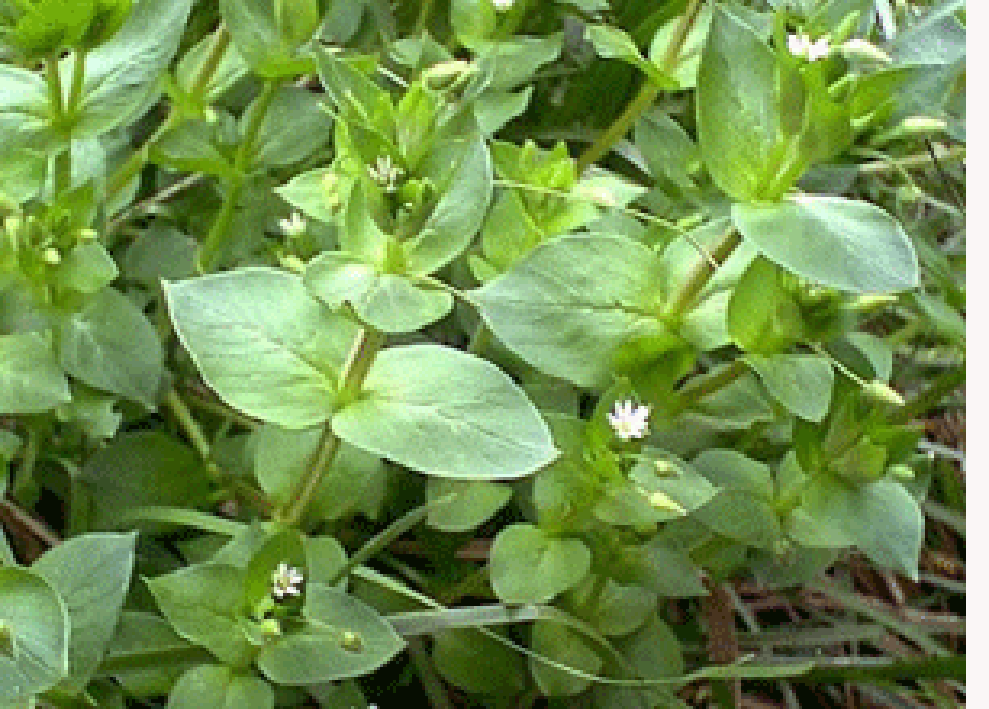 Close up of chickweed plant showing leaves and flowers..
Close up of chickweed plant showing leaves and flowers..
Welcome to the summary page for FabulousFusionFood's Cook's Guide entry for Chickweed along with all the Chickweed containing recipes presented on this site, with 10 recipes in total.
This is a continuation of an entire series of pages that will, I hope, allow my visitors to better navigate this site. As well as displaying recipes by name, country and region of origin I am now planning a whole series of pages where recipes can be located by meal type and main ingredient. This page gives a listing of all the Chickweed recipes added to this site.
These recipes, all contain Chickweed as a major wild food ingredient.
Common chickweed is a very common weed. It is extremely variable in its appearance, but generally it has a very slender tap root and greatly branching leafy stems, which lie along the ground. The lower leaves vary in size from 3 to 20 mm in length, they are oval in shape and have long stalks; the upper leaves tend to be larger (up to 25 mm in length) and lack stalks.
For the forager, this is an important plant as it is a rich source of copper. The greens themselves can be used as a vegetable which can be boiled or lightly fried. The greens can also be dried as a herb for the addition to salads. Please note that the common (edible) chickweed in light green in colour and should not be confused with its dark-green relative, hairy mouse-ear chickweed which is poisonous.
During the middle ages chickweed used to be collected and was sold in markets as a vegetable.
This is a continuation of an entire series of pages that will, I hope, allow my visitors to better navigate this site. As well as displaying recipes by name, country and region of origin I am now planning a whole series of pages where recipes can be located by meal type and main ingredient. This page gives a listing of all the Chickweed recipes added to this site.
These recipes, all contain Chickweed as a major wild food ingredient.
Common chickweed is a very common weed. It is extremely variable in its appearance, but generally it has a very slender tap root and greatly branching leafy stems, which lie along the ground. The lower leaves vary in size from 3 to 20 mm in length, they are oval in shape and have long stalks; the upper leaves tend to be larger (up to 25 mm in length) and lack stalks.
For the forager, this is an important plant as it is a rich source of copper. The greens themselves can be used as a vegetable which can be boiled or lightly fried. The greens can also be dried as a herb for the addition to salads. Please note that the common (edible) chickweed in light green in colour and should not be confused with its dark-green relative, hairy mouse-ear chickweed which is poisonous.
During the middle ages chickweed used to be collected and was sold in markets as a vegetable.
The alphabetical list of all Chickweed recipes on this site follows, (limited to 100 recipes per page). There are 10 recipes in total:
Page 1 of 1
| A Messe of Greens Origin: Britain | Nanakusa-gayu (Seven Herb Congee) Origin: Japan | Wild Greens Soup Origin: Britain |
| Chickweed Salad Origin: Britain | Pork and Wild Food Curry Origin: Britain | Wisteria, Chickweed and Pea Flower Spring Rolls Origin: America |
| Chickweed Soup Origin: Ancient | Spring Flower Salad with Dandelion Greens Origin: Britain | |
| Goosegrass and Chickweed Kedgeree Origin: Fusion | Terrine Verte (Wild Greens Terrine) Origin: Switzerland |
Page 1 of 1